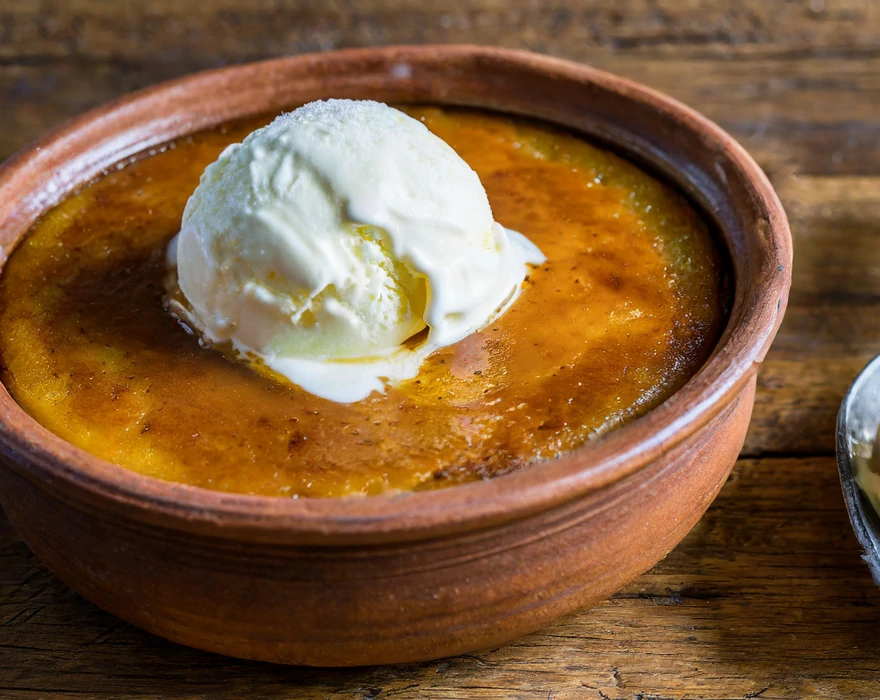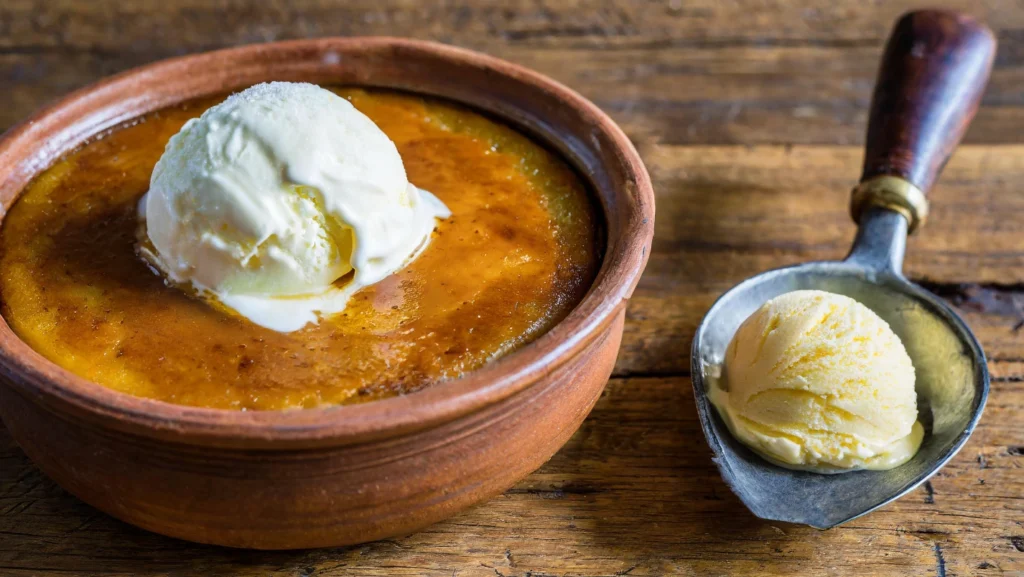
Introduction to Indian Pudding
The Indian pudding recipe is a testament to the rich tapestry of American culinary tradition, tracing back to the early settlers. This warm, comforting dessert, made primarily from cornmeal, milk, and molasses, symbolizes a bridge between the New World’s resources and the Old World’s culinary practices.
Originating from the Native American tradition of using ground maize for cooking, settlers adapted the indigenous ingredient into a sweet, spiced pudding that has endured through centuries. It’s not just a dish; it’s a slice of history served warm and satisfying.
This dessert’s cultural significance is deeply rooted in Thanksgiving and autumnal celebrations, but its simplicity and heartiness make it an excellent choice for any gathering. Understanding the Indian pudding recipe offers a glimpse into the culinary innovations that shaped early American cuisine.
Explore the origins of cornmeal in American cooking and discover how this humble ingredient shaped the nation’s culinary landscape.
Traditional Recipes
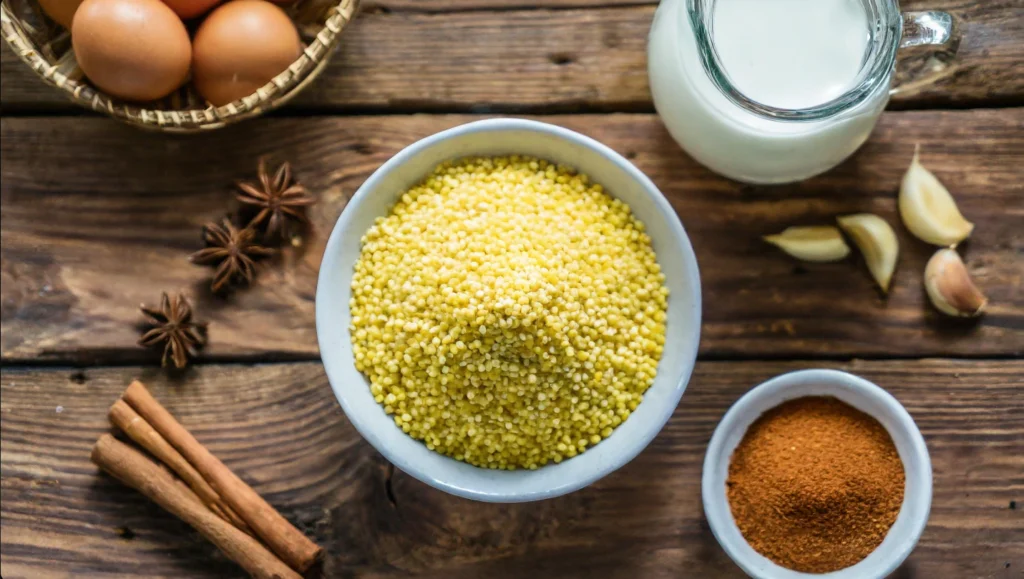
Basic Ingredients
The simplicity of the Indian pudding recipe belies its rich taste and comforting texture. At its core, the recipe requires:
- Cornmeal
- Molasses
- Milk
These ingredients come together in a symphony of flavors that speak to the dish’s rustic origins.
Step-by-Step Cooking Guide
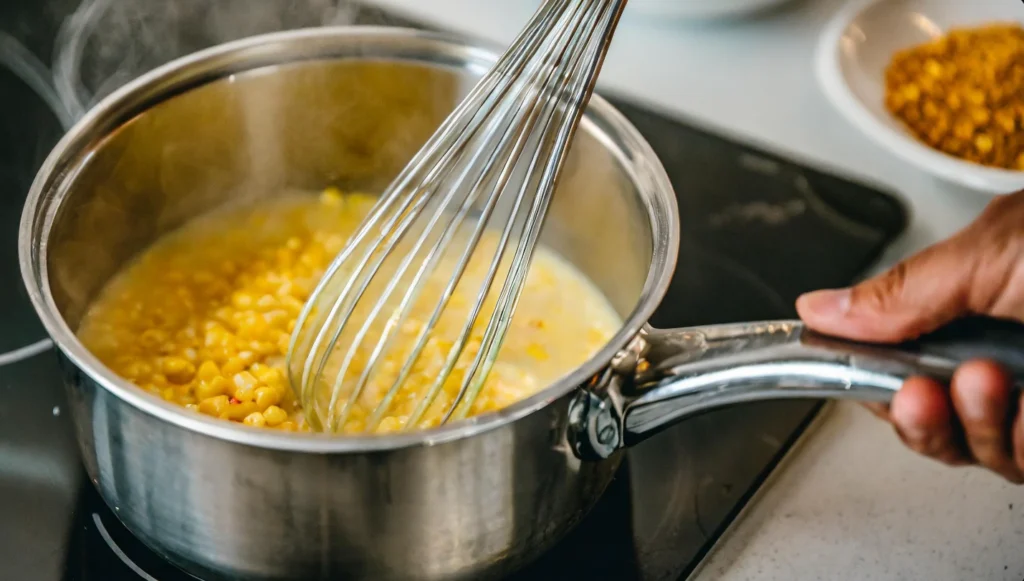
Creating the perfect Indian pudding involves a simple, yet precise process. The journey from raw ingredients to a warm, inviting dessert unfolds as follows:
- Preparing the Ingredients: Begin by mixing the dry cornmeal with cold milk to prevent lumps.
- Cooking Process: Slowly heat the mixture, adding molasses for sweetness and spices for warmth.
- Baking and Final Touches: The mixture is then baked until it achieves a delicate balance of creamy and firm.
Each step in the process is a tribute to the traditional cooking methods passed down through generations.
Variations Across Regions
The Indian pudding recipe has seen many adaptations across different regions, each adding a unique twist to this classic dessert. From the addition of local spices to variations in cooking techniques, these regional differences enrich the recipe’s heritage.
- Maine Indian Pudding incorporates local maple syrup for a distinctive flavor.
- New England Indian Pudding might feature a dollop of vanilla ice cream on top, marrying the warm pudding with cold, creamy sweetness.
These regional variations highlight the versatility and adaptability of the Indian pudding recipe, making it a beloved dish across the country.
The health benefits and culinary uses of molasses provide insight into why this ingredient is central to the recipe’s unique flavor profile.
Modern Twists to Indian Pudding
The traditional Indian pudding recipe has inspired chefs and home cooks alike to experiment with new ingredients and techniques, leading to an array of modern adaptations.
- Vegan and Gluten-Free Versions use almond milk and gluten-free cornmeal, ensuring everyone can enjoy this delightful dessert.
- Incorporating New Flavors like apple or pumpkin introduces a seasonal twist to the classic recipe, making it a versatile option for various occasions.
These contemporary interpretations honor the recipe’s roots while embracing the diversity of today’s culinary landscape.
FAQs
What is the history of Indian pudding?
The Indian pudding recipe dates back to the 17th century, evolving from Native American and British culinary traditions into a unique American dish.
What are the 3 types of pudding?
Traditional puddings can be classified into boiled, baked, and steamed. The Indian pudding recipe falls under the baked category, known for its dense, comforting texture.
Health and Nutritional Perspectives
While the Indian pudding recipe is rooted in tradition, understanding its nutritional aspects can offer insights into its role in a balanced diet.
- Nutritional Breakdown: This comforting dessert is more than just a treat; it provides a good source of carbohydrates for energy. Molasses, one of its key ingredients, is rich in iron and calcium.
- Dietary Adjustments: For those mindful of dietary needs, substitutions can make Indian pudding more accessible:
- Lactose-free milk alternatives like almond or soy milk can replace traditional milk.
- For a reduced sugar version, consider using less molasses or substituting it with a healthier sweetener option.
These adjustments ensure that the Indian pudding recipe can be a guilt-free indulgence for everyone.
Culinary Techniques and Tips
Perfecting the Indian pudding recipe is an art that comes with understanding a few key culinary techniques and tips.
- Cooking Tips for Perfect Consistency: The secret to the perfect consistency lies in the slow baking process, which allows the cornmeal to absorb the flavors fully and thicken to the right texture.
- Storage and Reheating: Indian pudding can be stored in the refrigerator and reheated, making it a convenient make-ahead dessert. When reheating, a little extra milk can help restore its creamy texture.
- Common Mistakes to Avoid: Overcooking the cornmeal mixture can lead to a lumpy texture. It’s crucial to stir constantly during the initial cooking phase to prevent this.
By mastering these techniques, you can ensure your Indian pudding is perfect every time.
Discover more traditional American desserts to see how the Indian pudding recipe fits into the broader context of the country’s culinary heritage.
Conclusion
The Indian pudding recipe is more than just a dessert; it’s a narrative of American history, culture, and innovation. From its simple, wholesome ingredients to the modern adaptations and dietary considerations, it embodies the spirit of American cooking—adaptable, inclusive, and always evolving. As we explore this traditional dish’s roots and branches, we’re reminded of the power of food to connect us to our past, present, and future.
Whether you’re a history enthusiast, a culinary expert, or simply someone who loves a warm, comforting dessert, the Indian pudding recipe offers a taste of America’s rich cultural tapestry. So, next time you’re looking for a dessert that warms the heart as much as it delights the palate, consider this timeless classic. It’s more than a dish; it’s a journey through the flavors and stories that make American cuisine uniquely its own.
Exploring the Indian pudding recipe not only delights the palate but also invites us to delve deeper into the rich tapestry of Indian cuisine. For those eager to explore further, consider visiting Makhani Sauce, a guide to one of India’s most beloved dishes. Dive into the art of marinating with Tandoori Sauce, and blend the best of Indian spices with American culinary traditions through the Indian Taco Recipe. Each link offers a journey into the heart of Indian cooking, enriching your culinary adventures with flavors that bridge cultures and traditions.
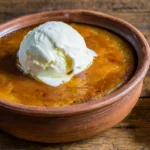
Easy Indian Pudding Recipe – Classic & Comforting
- Total Time: 2 hours 45 minutes
- Yield: Serves 8
Description
The Indian pudding recipe is a testament to the rich tapestry of American culinary tradition, tracing back to the early settlers. This warm, comforting dessert, made primarily from cornmeal, milk, and molasses, symbolizes a bridge between the New World’s resources and the Old World’s culinary practices.
Ingredients
6 cups of milk
½ cup of yellow cornmeal
1/3 cup of molasses
1/4 cup of sugar
1/4 cup of butter
1 teaspoon of ground cinnamon
1/2 teaspoon of ground ginger
1/4 teaspoon of salt
2 eggs, beaten
Optional: Vanilla ice cream or whipped cream for serving
Instructions
Preheat Oven:
Start by preheating your oven to 300°F (150°C). This ensures a gentle cooking environment for the pudding.
Mix Dry Ingredients:
In a small bowl, whisk together the cornmeal, cinnamon, ginger, and salt.
Heat Milk:
In a large, heavy-bottomed saucepan, heat the milk over medium heat until it’s just about to simmer. Be careful not to let it boil.
Combine Milk with Cornmeal Mixture:
Gradually whisk the dry cornmeal mixture into the warm milk. Keep whisking to prevent lumps from forming.
Add Molasses and Sugar:
Stir in the molasses and sugar into the saucepan. Continue to cook over low heat, stirring frequently, until the mixture thickens slightly, about 10-15 minutes.
Temper Eggs:
Take a small amount of the hot mixture and slowly whisk it into the beaten eggs to temper them. This prevents the eggs from curdling when added to the hot mixture.
Combine Eggs with Main Mixture:
Slowly pour the tempered eggs back into the saucepan, stirring constantly to incorporate them evenly.
Add Butter:
Add the butter to the mixture, stirring until it’s completely melted and integrated.
Bake:
Pour the mixture into a greased 9×13 inch baking dish. Bake in the preheated oven for about 1.5 to 2 hours. The pudding is done when it’s set and has a golden-brown crust on top.
Cool and Serve:
Allow the pudding to cool slightly before serving. It can be enjoyed warm or cold, but traditionally, it’s served warm with a scoop of vanilla ice cream or a dollop of whipped cream on top.
- Prep Time: 15 minutes
- Cook Time: 2 hours 30 minutes
- Category: PUDDING
- Method: BAKING
- Cuisine: INDIAN
Nutrition
- Serving Size: 1 cup
- Calories: 300 kcal
- Sugar: 20g
- Sodium: 150mg
- Fat: 7g
- Saturated Fat: 4g
- Unsaturated Fat: 2g
- Trans Fat: 0g
- Carbohydrates: 50g
- Fiber: 2g
- Protein: 6g
- Cholesterol: 90mg
Keywords: indian pudding recipe, traditional cornmeal pudding, colonial dessert recipe, molasses pudding

